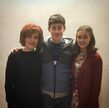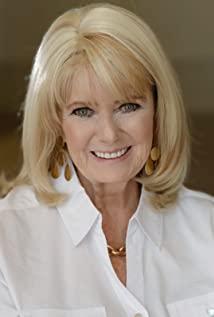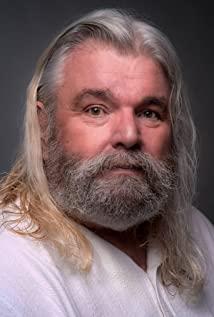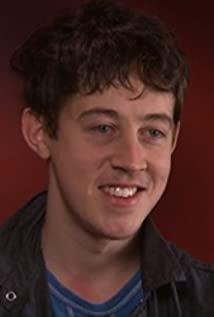-
Professor Hendricks: [talking to Derek about UFO signal and conspiracy theory] You don't automatically jump to the most extreme explanations. You analyze the reasonable ones first.
-
Keith Olbermann: [footage archive in epilogue] And then there's this story you may have already heard about. United Airlines employees who swear it was something other-worldly in the skies above Chicago's O'Hare Airport on November 7th, but neither the FAA, nor indeed their own employer, appears to be taking them seriously. Chicago Tribune, interviewing several people anonymously, including maintenance workers, baggage handlers and pilots, who each have all described a dark gray, saucer-like object that hovered low over Concourse C of the United Airlines terminal just before sunset before shooting off into the sky. Some say it moved so fast, it literally punched a hole in the clouds. United Airlines claims it had no record of the sighting, even though employees say they filled out reports.The FAA initially told the Tribune that it likewise had no information on the UFO. Then, after the newspapers filed paperwork under the Freedom of Information Act, the FAA turned up a call from the United Airlines supervisor to the airport control tower asking whether the object was on-radar. And now, the agency has concluded it was, quote, "weather phenomenon," and it considers this case closed.
-
Franklin Ahls: The sighting at CVG wasn't the first. There were others. And every time we tried to establish contact with them using a variation of the Arecibo signal, we failed. They put the Fine-Structure Constant in their message to build a common mathematical language.
Derek: Uh...
Franklin Ahls: I didn't know it could be used for determining intelligence. In the new signal we received today, there are 19 decimal places. We can only measure it to 12. And this one is much more complex than anything we've seen. The last one was 14-bit, but this one is 42-bit. And not only is it laid out on a grid, it's three-dimensional. Which tells us a couple of things. One...
Derek: They're a hell of a lot smarter than us.
Franklin Ahls: And two, when we're trying to find them, we might be off by a lot. In their first signal, they sent two-dimensional coordinates here on Earth. In this new signal, I believe they sent...
Derek: Three-dimensional coordinates in space.
Franklin Ahls: Well, the focus of research now is not that it changes throughout the universe, but that it changes over time.
Derek: Okay, so we have to work out a more accurate way of measuring the FSC.
Franklin Ahls: Which means developing new technologies, new theories. And that could take five years or 500. Or five months, with your help. And you do understand what this means?
Derek: We're not alone.
-
Professor Hendricks: We are servants rather than masters of Mathematics.
-
Professor Hendricks: I know you think that if we stare at that signal long enough, that something is going to click, but you can't force it. And I am certainly not the person who's going to help you crack it. I mean, math, science, physics? It's a young person's game. Riemann. Galois. Einstein.
Derek: Eugène Ehrhart was 60 when he got his PhD. The Ehrhart polynomial? Yitang Zhang was 57 when he proved that there were an infinite number of consecutive pairs of primes that were separated by less than 70 million.
Professor Hendricks: [reluctant] Two examples.
Derek: Schrodinger. Frohlich. Smale.
Professor Hendricks: [funny] Okay! Okay!
-
Professor Hendricks: Chapter four. Eigenvalues and Eigenvectors. Now, if we have a square matrix "A" that represents a linear transformation, then this matrix times the vector is equal to a scalar lambda times the same vector. Now, the "v" is called an eigenvector, and the lambda is called an eigenvalue, and these kinds of problems have applications in all kinds of things, like structural engineering, and spin transitions and neutral hydrogen.
Professor Hendricks: [after a pause] And it has a wavelength of 21 centimeters. That would be significant, wouldn't it? Derek?
Derek: It doesn't matter. The matrix is double, or half, or whatever.
Professor Hendricks: Twenty-one centimeters.
Derek: [confused] Twenty-one centimeters, what?
Professor Hendricks: The frequency of hydrogen. The spectral line of neutral hydrogen has a frequency of 1,420 MHz and a wavelength of 21 centimeters. Two lines, 38 increments east.
Derek: And 22 north.
Professor Hendricks: And then you multiply both by 9,433.
Derek: And then by 21 centimeters. The wavelength is the unit of the measurement. It is coordinates.
-
Prologue: Hydrogen atoms emit light at specific energy levels. These energies are determined by the Fine-Structure Constant. Fine-Structure Constant = 0.0072973525664 17. The FSC is a mysterious number that appears in many calculations of the most fundamental physics in our universe but we have no idea where it comes from. The atmosphere, the stars, the air we breathe, even our shoelaces have an atomic makeup that include this enigmatic number. It is a mathematical concept that would be recognized anywhere in the universe. In 1974 Frank, Carl Sagan and several others scientists sent the Arecibo Message into space. It contained basic math and other information intented to establish contact with other life in the universe. They aimed at at the star cluster M13, and the world waited in anticipation for a response bit it would take 22,800 years for the message to reach someone in M13 unless they come to us first.
-
Lee: So, if this was a UFO, right? And there were aliens on it what do you think they would look like?
Derek: You mean, do I think they're like little grey people with big black eyes?
-
Franklin Ahls: I'm not an astrophysicist so thank you for coming. I just want to ask you a few questions about the Fine-Structure Constant. I'm told that you could shed some light on it, how it could be used as a benchmark for determining intelligence or pinpointing a location in space.
Female Astrophysicist: Using the FSC to determine intelligence is fairly straightforward, but using it to pinpoint a location in space is problematic. Say the FSC is different in different parts of space, which there's essentially no evidence of. If the FSC did depend on things like local density, and if two places, way far apart from each other had the same local density, they might also have the same FSC. And if you gave that number to someone, how would they know which place to go?
Franklin Ahls: But if we had more than one, couldn't we use them the same way we use pulsars to pinpoint locations? Over a much greater distance, obviously?
Female Astrophysicist: The idea that it's different in different parts of space isn't really the focus of research now.
Franklin Ahls: You know, I have a room full of scientists who haven't been able to explain anything to me.
-
Franklin Ahls: [talking to a room full of astrophysics] I wonder if they've got anything to do with the Fine-Structure Constant. Can anyone explain to me how this can be used for determining intelligence? As well as pinpointing a location in space? How come we don't know everything there is to know about this number? People? I guarantee you, if this was the Manhattan Project or you all were trying to decode the Enigma machine, things would be a little bit different in here. So, I'm gonna try to put this in a little bit of perspective for you. Ten to the sixteen watts of energy. Now, I know you're all familiar with the Kardashev Scale, Type I, Type ll, Type lll civilizations. Type I is a global civilization that controls an energy level roughly equivalent to all of the solar energy striking the planet's surface. Ten to the sixteen or seventeen watts. Type ll controls all the energy from a star and Type lll is galactic. Right now, we are about a Type 0.7. We are becoming a global civilization, but we are not quite there yet. We control... roughly ten to the 13 watts of energy. Now, scientists like you, have calculated that we might possibly make the transition to a Type I in the next hundred years or so, if we don't destroy ourselves first. We should see evidence of Type I, Type ll, Type lll civilizations everywhere in the universe, if they existed, but what have we found so far? Nothing, which makes me think it's either very rare or impossible to make that first step to becoming a Type I, but whatever, or whomever, showed up at CVG the other day, traveled huge distances to get here. They have a mastery of space travel that, well, we can't even begin to understand. Chances are they have made that first step, maybe even the second. And we need to find out how they did it and learn from that because I don't know about you, but I'm pretty sure we can't do it on our own.
-
Derek: Hundreds of years go by and people make tiny, little improvements. And then there's an opportunity to take a giant leap forward. Like with relativity, or going to the moon. When it's your finals week, you cut yourself off from everyone. You go to the library, you drink 100 cans of Red Bull. You don't talk to anyone for, like, four days, because you know everything is riding on it. This is my finals week. What are the most important questions in the world? "Is there a God?" "What happens when we die?" And "Are we alone in the universe?" If anyone answered any one of those questions, it would change everything.
Natalie: We're never as alone as we think we are.
-
Derek: [going to a park bench] Okay, now will you come with me? Please? Over here. Okay, so if this is the distance between the Sun and the Earth, how far do you think the next closest star is? Proxima Centauri?
Natalie: Twenty feet?
Derek: [pointing to a highway] See, 71? About twice as far as that, 4.3 miles. Now, if that's our scale, how big do you think the galaxy is? You'd have to keep walking in that direction until you got right back here; all the way around the world, and then do that three more times. And that's just our galaxy. There are at least 100 billion other galaxies out there.
-
Professor Hendricks: You know there was a man who lived a long time ago, a brilliant man, an inventor. He took credit for other people's work. He conducted dangerous experiments with radiation that cost his assistant his arms. He even helped to create the electric chair, and he used it to kill somebody in order to prove that his competitor's technology was dangerous. His name was Thomas Edison. You strike me as that kind of person, Derek. Now don't get me wrong, I like electricity, and the world needs people like that, but I certainly wouldn't want to be friends with him.
-
Natalie: A lot of the best mathematicians do their best work in their early 20s; Einstein, Ramanujan...
Professor Hendricks: Riemann, Abel, Galois, I know the list.
Natalie: You.
-
Derek: Sorry if I woke you guys up.
Professor Hendricks: No you're not.
UFO Quotes
Extended Reading











